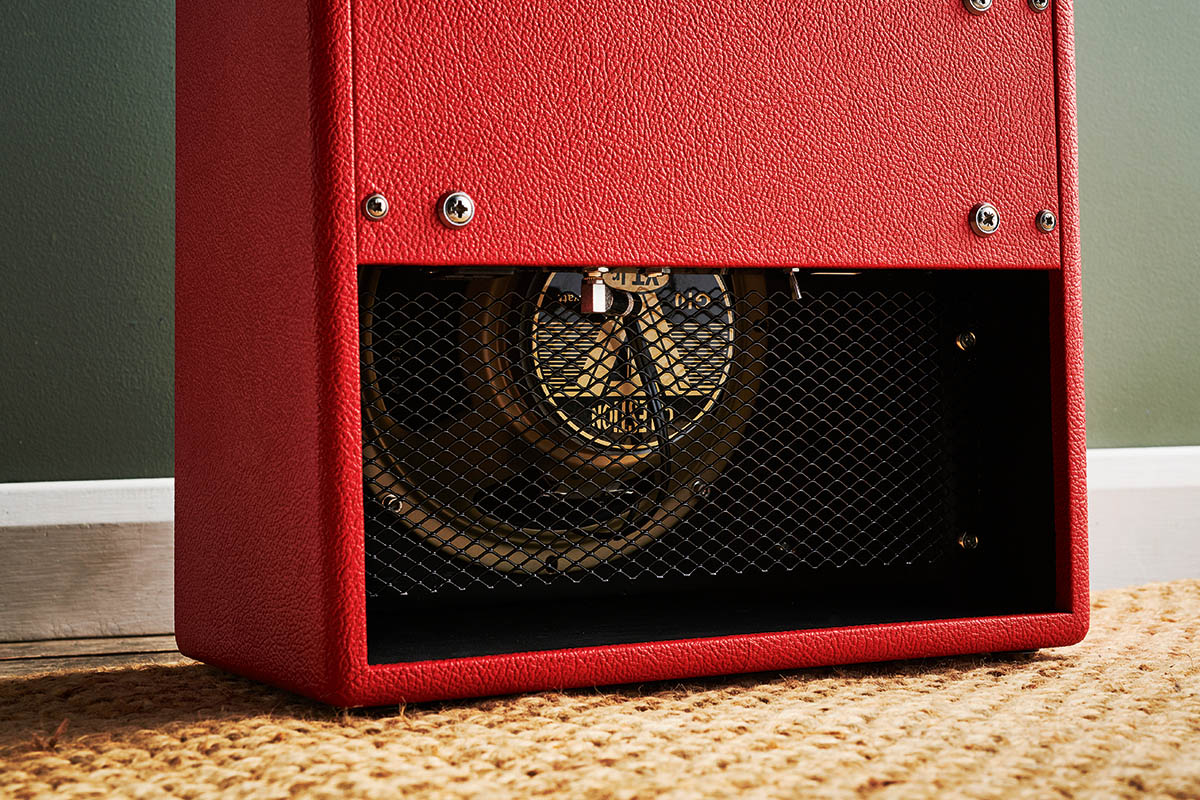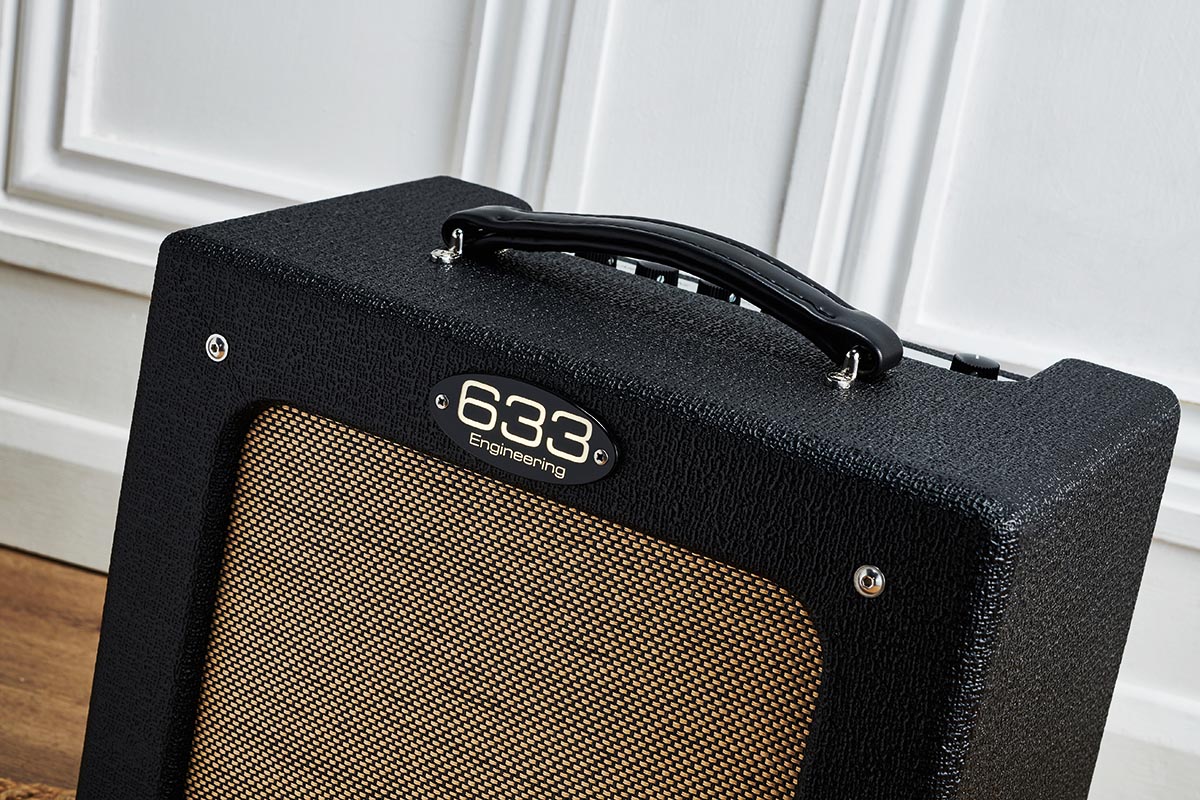Guitar World Verdict
633 Engineering stakes a claim for the ultimate small valve amp with pure Class A tone and impeccable build quality. The Standard Dragonfly makes an exceptional pedal platform, while the RT's effects and cab sim are worth the extra expense.
Pros
- +
Compact and portable without sacrificing build quality.
- +
Ultra-low noise performance.
- +
Wide range of clean and low to medium overdrive tones.
- +
Exceptional all-valve dynamics and tone.
- +
RT's superb digital reverb, optical tremolo and speaker-simulated balanced line out add a lot of versatility.
Cons
- -
It’s pricey, but you’re getting what you pay for and then some.
- -
We’d like the RT's tremolo effect’s max speed to be set a little higher.
You can trust Guitar World
Now well known as one of the UK’s top boutique amplification brands, 633 Engineering is headed up by designer Cliff Brown, whose extraordinary bespoke heads and combo amps have gained approval from many top players in the UK and around the world, including Ash Wilson, Stuart Dixon, Micky Moody and blues maestro Kirk Fletcher to name but a few.
Despite the pandemic pausing live music, 633’s popularity is as strong as ever, with an increased interest in products for home use and recording.
Following regular enquiries for a smaller guitar amp, Cliff has responded to popular demand with the highly anticipated and relatively affordable Dragonfly and Dragonfly RT, two single-ended, pure Class A designs with some typical 633 tricks up their sleeves.

While the Dragonfly amps cost considerably less than a bespoke 633 head or combo, there’s been no skimping on materials or build quality. The open-back cabinets are precision machined from birch ply, hand-assembled and finished to the high standards we’ve come to expect. There are no woodscrews; everything is bolted together with stainless steel fixings and neatly covered in heavy duty vinyl.
Behind the Dragonfly’s attractive ‘TV’-style front, there’s a 10-inch Celestion VT Jr attached to a separate baffle. The Dragonfly chassis is folded from generously thick aluminium, which is an ideal material, combining low weight with superior screening and heat transfer characteristics.
The amps use a toroidal mains transformer to minimise hum pickup, and a generously sized conventional output transformer with two separate taps to accommodate the EL84 and 6V6 output valves, which sit at one end of the chassis along with a single 12AX7 twin triode.

The smaller electronics sit on a single high-quality through-plated printed circuit board. The power supply stuff resides at one end and audio at the other, leaving a space in the middle for the RT’s effects and transformer-balanced cabinet simulator.
All the latest guitar news, interviews, lessons, reviews, deals and more, direct to your inbox!
The valve bases, control knobs, switches and sockets are all chassis-mounted and hand-wired to the PCB, completely separating it from physical and thermal stresses. This construction method greatly improves the long-term reliability of the amplifier, as well as making servicing easier if it ever becomes necessary.
As we say, the Dragonfly and Dragonfly RT are both single-channel designs, with an all-valve signal path and deceptively simple volume and tone knobs linked to 633’s headroom control, which governs the power output from a maximum of around five watts, down to roughly half a watt at the lowest setting.
On 633’s larger custom amps the headroom control is usually a rotary switch; here, it’s a continuously variable pot that incorporates the on/off power switch.

The standard Dragonfly has a pair of high- and low-gain input jacks, which handle a wide range of input signals as well as allowing the amp to be cross-linked; the RT version replaces the low-gain input jack with a footswitch socket for its tremolo effect. There are extra controls on the RT’s panel for tremolo Speed and Depth, together with a Level control for the digital reverb.
A preset pot hidden behind a small hole in the control panel lets you tweak the reverb’s decay time, from a short room at one extreme to a virtually endless halo of reflections at the other, with a useful centre detent marking the ‘normal’ position.
On the bottom panel, both amps feature a single speaker outlet jack, a fixed line output jack, and the Dragonfly’s ‘secret weapon’ – a toggle switch that lets you flip between 6V6 and EL84 output valves, which are both permanently installed.
The RT version has a further benefit here in the shape of a transformer-balanced analogue cabinet simulator output for easy recording or PA hook-up. The Dragonfly amps typify what we’ve come to expect from 633, with classic ‘form following function’ British cosmetics and outstanding build quality, making them ideal for home, studio and stage.

Feel & Sounds
Both Dragonfly amps have plenty of what we’ve come to know as ‘the 633 sound’, with less treble fizz and more emphasis on midrange.
While the midrange is strong, it isn’t at all nasal like some amps and provides ample punch through a live mix. Combined with a shimmering treble and tight bass, partly due to the 10-inch Celestion speaker, it’s a perfectly balanced voice that’s equally flattering to our regular Strat and Les Paul, sounding particularly awesome with a borrowed Gibson ’64 ES-335 replica.
Using volume, tone and headroom controls together opens up a huge sonic vista, from bell-like cleans and jazz archtop warmth to rich medium-gain overdrives.
On pure valve circuits such as this, small changes to control settings often make significant differences to what you hear. However, because the Dragonfly has just three controls, that brilliant sound you dialled in yesterday can easily be retrieved. The tone control is key here as it controls the break-up of the high and mid frequencies, with yet more fun happening as you vary the Dragonfly’s switchable output valves.
The 6V6 is great for glassy USA-influenced rhythm tones that morph into classic Tweed-era and Dumble-style overdrives. The slightly darker tones and earlier break-up of the EL84 are perfect for classic British invasion rock and blues, adding an aggressive crunch that’s great with single coils and huge with a beefy humbucker or a decent overdrive pedal.
We tried out the Dragonfly with 633’s new X2 and X3 overdrive pedals and the results were impressive, with articulation and dynamics that almost seem to second guess how you’re going to play the next note, cleaning up with just the slightest drop in pick attack, or adding plenty of grit when digging in a little harder.
The Dragonfly RT’s effects add extra seasoning, with an optical tremolo that goes from deep, slow Americana to almost-but-not-quite 60s surf stutter, while the rich digital reverb adds warmth and ambience.

The reverb tail is modulated by the tremolo for authentic vintage tones, while the decay time goes from a small rockabilly room to infinite repeat, ideal for adding ambient washes. The RT’s cabinet simulator is a straightforward analogue filter that works really well for live PA or recording. It’s indispensable if you don’t have a microphone to hand or as a second sound source.
As you might expect given Cliff Brown’s considerable studio experience and his time as Soundcraft’s chief designer, both Dragonfly amps have hiss and hum levels so low as to be practically non-existent, making them ideal for the most demanding pro studio use.
Elsewhere, the five-watt output is louder than you might think, capable of holding its own for low-volume rehearsals or smaller gigs, especially with the RT hooked up to a PA via its cab sim output.
Verdict
While modelling amps are increasingly exciting and certainly have their place, there’s still something special about a really well-sorted valve amplifier, where you not only hear but feel the electronics working dynamically to enhance your music – an arcane analogue collision of voltage, current and sound that’s still difficult to mimic convincingly in the digital domain.
They’re hardly impulse purchases, but excellence like this doesn’t come cheap and never did; compared to similar top-drawer competition from the States, we think they’re great value for money
The stunning response and pure Class A tone of 633’s Dragonfly amps easily matches the world’s best boutique offerings, with build quality and low-noise performance that’s very hard to beat.
Aimed at professionals and serious amateurs, they sound amazing at home or in a studio, with features that can help make the jump to stage use, as live music tentatively returns.
They’re hardly impulse purchases, but excellence like this doesn’t come cheap and never did; compared to similar top-drawer competition from the States, we think they’re great value for money.
The standard Dragonfly is a compelling choice if you already own a well-stocked pedalboard or an outboard cabinet simulator, while as a standalone amp we think the added versatility of the Dragonfly RT’s effects and cab sim is well worth the extra expense. Beyond any doubt, 633’s Dragonfly has taken the small valve combo format and, once again, significantly raised the bar.
Specs

633 Dragonfly
- PRICE: £1,165
- ORIGIN: UK
- TYPE: Valve preamp, valve power amp
- OUTPUT: 5W RMS
- VALVES: 1x 12AX7 preamp, 1x 6V6GT, 1x EL84
- DIMENSIONS: 380 (w) x 230 (d) x 360mm (h)
- WEIGHT (kg/lb): 9.3/20.5
- CABINET: Birch ply
- SPEAKERS: 1x10” Celestion VT Jr
- CHANNELS: 1
- CONTROLS: Volume, tone, adjustable headroom/power
- FOOTSWITCH: None
- ADDITIONAL FEATURES: High and low-gain inputs, line out, switchable between 6V6 and EL84 output valves
- OPTIONS: Variety of different covering fabrics; contact manufacturer for availability
- RANGE OPTIONS: The Dragonfly RT includes digital reverb, tremolo and a transformer-balanced cab sim for £1425. Also available in head format to special order; contact manufacturer for details

633 Dragonfly RT
- PRICE: £1,425
- ORIGIN: UK
- TYPE: Valve preamp, valve power amp
- OUTPUT: 5W RMS
- VALVES: 1x 12AX7 dual triode, 1x 6V6GT, 1 x EL84
- DIMENSIONS: 380 (w) x 230 (d) x 360mm (h)
- WEIGHT (kg/lb): 9.4/20.7
- CABINET: Birch ply
- SPEAKERS: 1x10” Celestion VT Jr
- CHANNELS: 1
- CONTROLS: Volume, tone, reverb level, reverb dwell (decay time preset), tremolo speed, tremolo depth, adjustable headroom/power
- FOOTSWITCH: Single latching footswitch (not supplied) toggles tremolo effect
- ADDITIONAL FEATURES: Digital reverb with adjustable dwell and level, optical tremolo, balanced XLR cab sim out, line out, switchable between EL84 and 6V6 output valves
- OPTIONS: As Dragonfly (see left)
- RANGE OPTIONS: The standard Dragonfly 1x10” combo without effects or the balanced cab sim output is £1,165. Also available in head format to special order; contact manufacturer for details
- CONTACT: 633 Engineering
Nick Guppy was Guitarist magazine's amp guru for over 20 years. He built his first valve amplifier at the age of 12 and bought, sold and restored many more, with a particular interest in Vox, Selmer, Orange and tweed-era Fenders, alongside Riveras and Mark Series Boogies. When wielding a guitar instead of soldering iron, he enjoyed a diverse musical career playing all over the UK, including occasional stints with theatre groups, orchestras and big bands as well as power trios and tributes. He passed away suddenly in April 2024, leaving a legacy of amplifier wisdom behind him.


